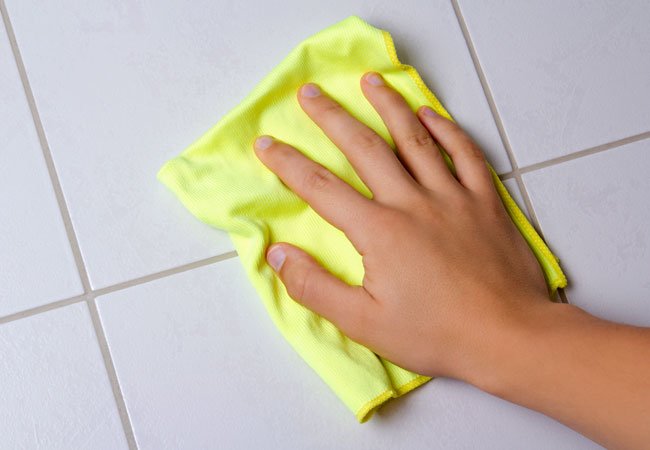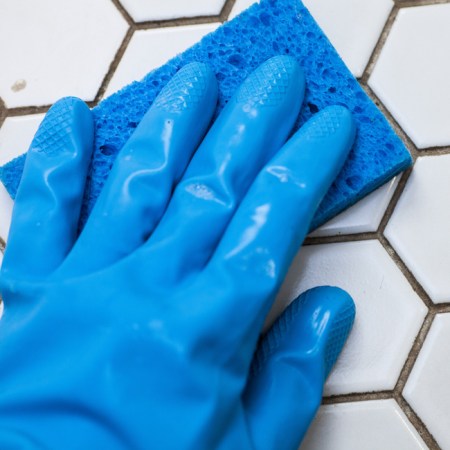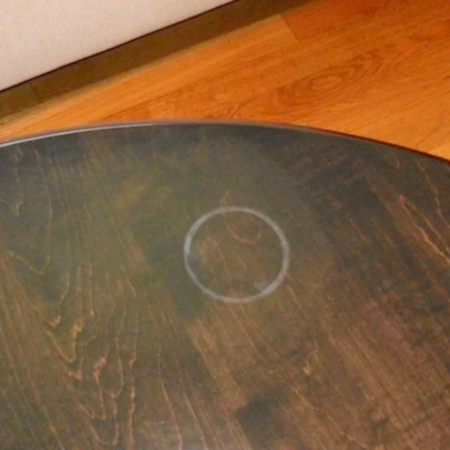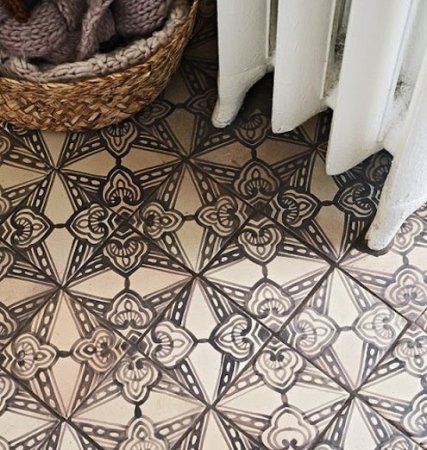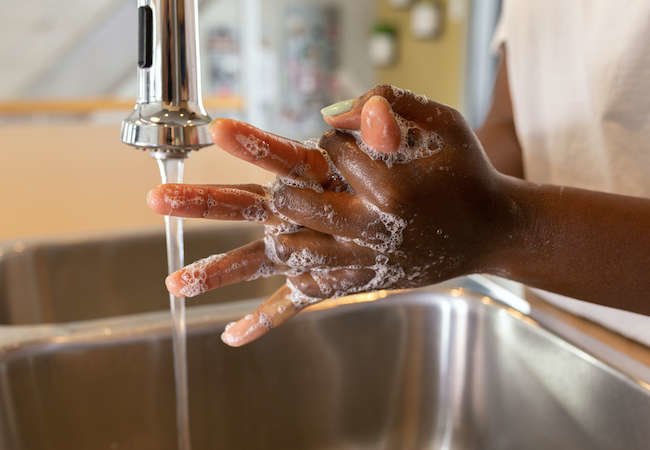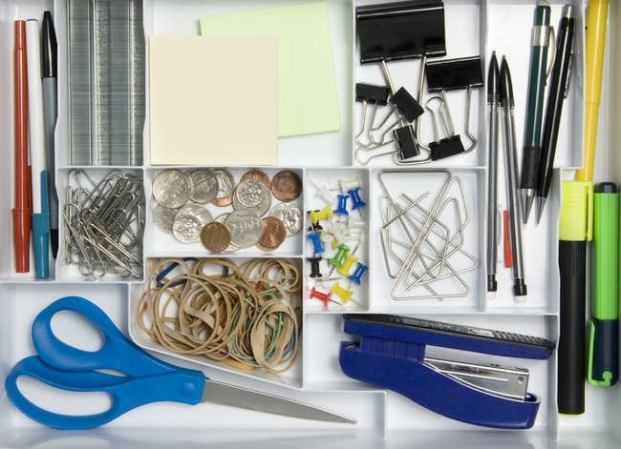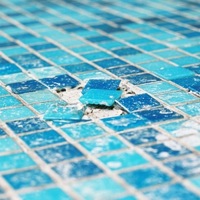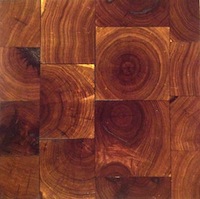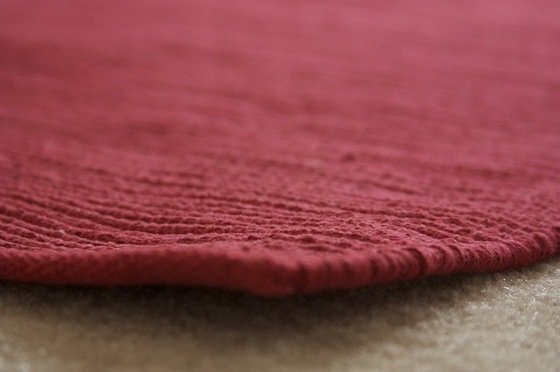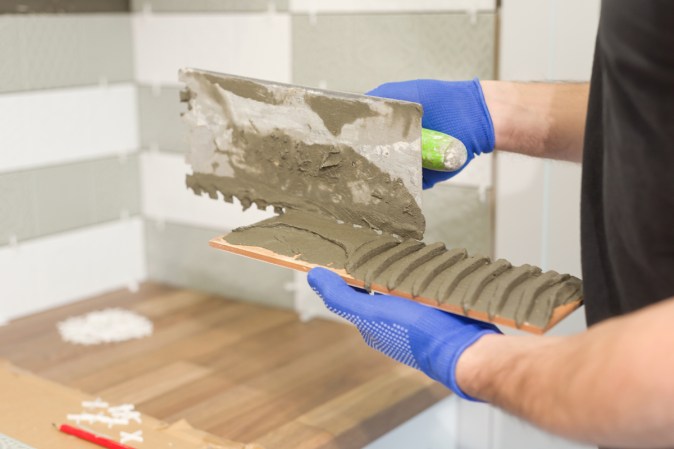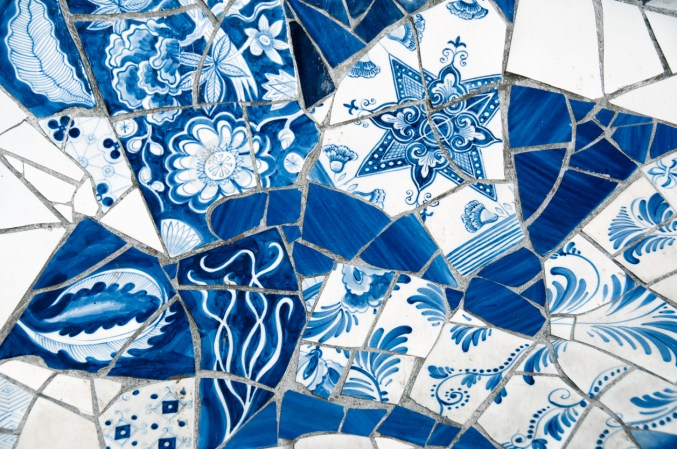We may earn revenue from the products available on this page and participate in affiliate programs. Learn More ›
It’s hard to beat ceramic tile for beauty, versatility, and durability. Perfect for bathroom, kitchen, even entryway floors—as well as backsplashes and countertops—ceramic tile is generally easy care, but it does require some upkeep. Follow these guidelines on how to clean ceramic tile, and you’ll ensure that yours stays in sparkling shape for years to come.
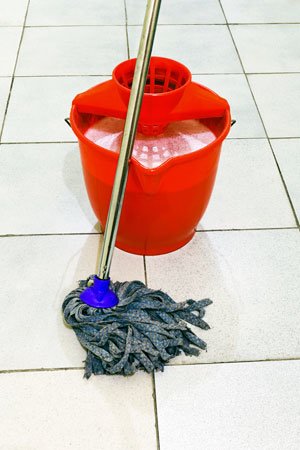
Stave off scratches.
Though a relatively tough material, ceramic tile—composed of natural clay, sand, and water, then baked in a kiln—can get scratched.
Regular sweeping or vacuuming (using a soft head attachment) will keep dirt and debris from marring the surface and getting ground into the grout.
If you’ve got ceramic tile in an entryway, place a doormat both outside and inside and encourage family to wipe their feet.
Wash tiles weekly.
After sweeping or vacuuming, mop ceramic tile floors at least once a week with a small amount of mild dish detergent mixed in hot water. There should be no need to use stronger stuff, but if you wish to, test your chosen cleanser on an unobtrusive spot (like behind an appliance) to ensure it won’t harm the finish.
Avoid using a sponge mop, which will push dirt off tiles and into grout. Use a string or strip mop head instead. Replace water as soon as it gets dirty or you’ll get dull, cloudy results.
Avoid accidents.
Ceramic tile can be slick when wet, so either dry the area thoroughly with a clean towel or stay out of the room until it air-dries completely to avoid a slip.
Pick up spills promptly.
Everyday messes like spilled milk and tracked mud should be cleaned up as soon as you spot them or tiles can stain. Simply dampen a cloth or mop with warm water and a bit of mild dish detergent and swipe it up.
Seal the seams.
Grout is applied to tiles to lock them tight, keep out water, and provide a finished look. But grout is porous substance and often white or light-colored, so prone to getting dingy. A preventive measure is to seal the grout once tile has been installed, and once or twice a year afterward. There are various easy-to-apply grout sealers available at your local hardware or home store.
TIP: When installing new tile, consider darker grout. Not only does it hide dirt, the contrast lends an attractive modern look.
Get grime out of grout.
If grout does need cleaning, often a good going-over with a stiff brush and hot water will do the job. Tougher jobs call for a vinegar/baking soda paste or a hydrogen peroxide solution: Allow several minutes dwell time before scrubbing with the brush, then rinse. Really stubborn stains may require bleach or even steam cleaning.
Once grout is clean, a regular spray-down with vinegar-and-water solution will help to prevent new stains from setting in. (For more grout-cleaning know-how, go here.)
